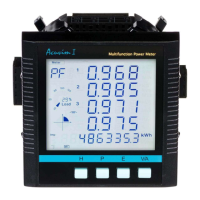199
5.4 RS485 Module (AXM-485)
5.4.1 Communication Parameters Setting
RS485, also known as EIA-485, is a telecommunications standard for binary serial
communications between devices. RS485 is the most versatile communication
standard in the standard series dened by the EIA, and it is currently a widely
used communication interface in data acquisition and control applications
where multiple nodes communicate with each other.
The RS485 signals are oating and each signal is transmitted over a dierential
signal + line and a differential signal - line. The RS485 receiver compares the
voltage dierence between both lines, instead of the absolute voltage level on
a signal line. If the dierential signal + and dierential signal - lines are twisted,
better communication performance can be achieved. The twisted pair adds
immunity to ght noise. If high noise immunity is needed, often a combination
of twisting and shielding is used. For example, shielded twisted pair or foiled
twisted pair networking cables.
5.4.2 Function Description of RS485 module
AXM-RS485 module uses RS485 serial communication and the Modbus-RTU
protocol, just like the onboard RS485 port of the Acuvim II series meter. It
provides a second RS485 port for serial communication, and it can be working
with the onboard RS485 serial communication simultaneously.
The terminals of communication are A, B, and S. A is dierential signal +, B is
dierential signal -, and S is connected to the shield of the twisted pair cables.
• Up to 32 devices can be connected on a RS485 bus without repeaters.

